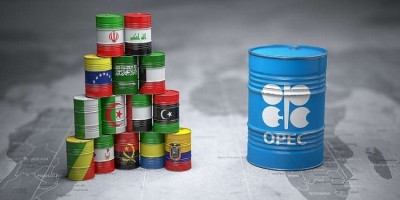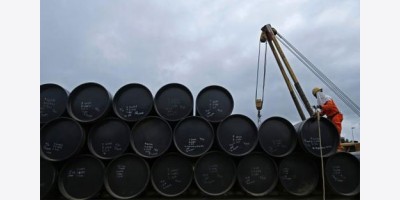Tamar Essner, energy analyst at Nasdaq Advisory Services
It took until July, but the crude-oil markets have managed to ignore Chinafor most of the year so far. The price volatility that saw an 11-percent selloff in oil futures in the first quarter followed by a 25-percent climb in the second quarter was driven primarily by uncertainties regarding the situations in Greeceand Iran along with inconclusive data in the U.S. on rig counts and inventory levels.
Meanwhile, China, one of the largest consumers of crude oil in the world, has been largely overlooked.
To the extent that oil investors were paying attention to China, it was mostly as a source of bullishness. Oil-demand estimates, the bulls said, were being understated and would surprise to the upside, as a beneficiary of cheap energy prices. With 30 percent of the expected yearly increase in global oil demand linked to China alone, according to the International Energy Agency, the country's economic data were certainly being watched, though the patchy nature of the reports did not lend itself to clear interpretation or trading direction—until recently.
As news came into focus about sweeping government interventions unable to quell three weeks of panic-selling from the Chinese stock market, WTI fell sharply. Subsequently, the year-to-date losses in oil and gas stocks, which have steadily been the worst equity performers relative to other macro sectors, quickly accelerated.
The damage was not confined to the energy complex, either. Several industrial commodities, such as copper, also hit multi-year lows and even gold, generally a safe-haven asset, approached five-year lows with China a major consumer of both precious and base metals.
While it's been generally acknowledged that the pace of Chinese expansion is slowing, gone are the days of the double-digit growth. It's been equally accepted that the government's targeted 7-percent rate would be easily achieved, if only because the stability of their leadership depends on it.
Yet in just three short weeks, Chinese stocks lost $3 trillion in value. But, what's so bad about a little (or a lot) of equity market volatility? After all, a 30-percent fall in the Shanghai index after a 150 percent gain is arguably a very healthy realignment.
Even though China's market selloff was not a reaction to any specific signs of fundamental weakness, it is nonetheless significant because of its potential to undermine business and consumer confidence. As the world's most significant market for commodities as well as a major buyer of factory equipment and machinery, even a hint of slowdown in China poses direct risk not only to its own levels of crude oil demand, but to the global economy at large, thereby affecting crude oil demand from other countries.
More importantly, however, the market meltdown, following a dramatic rally, underscores the natural deceleration of its economy following a decade of boom. As industrialization slows, and the economy matures, not only will growth decelerate, but energy demand will be less central to the expansion of GDP. This will be a source of permanent demand destruction, particularly from the energy intensive industries such as iron, steel and cement used to build China's infrastructure and manufacturing capacity which catapulted the country to become the world's single largest economy (exceeding even the U.S. this year).
To some extent, China's industrial deceleration will be offset by the expansion of its middle class. This segment has been an increasingly important source of demand for gasoline as more people can afford cars. The fear is that hefty market losses could cause a sharp drop in spending by Chinese consumers, now bereft of much of their savings.
Although some studies have suggested that negative equity performance has minimal adverse impact on consumption levels – especially in countries such as China where, according to UBS, equities still account for only about 20 percent of overall household wealth – we're dealing with the erratic nature of market psychology. Even if consumption is unabated, confidence in the efficacy of the regime to spur growth is now up for debate as the leadership will have to choose between stability and control versus transparency and free markets.
What happens to all the global investments that were linked to models that had assumed 7-percent Chinese growth? Some bold economists, according to the Wall Street Journal, have predicted the Chinese economy to recede to a startling 3 percent or lower growth rate over the coming years, which could easily result in commodity prices cut in half.
More broadly, the situation in China is significant for the energy complex today because it reflects one of several other shifting dynamics in the financial market landscape. Many of the longstanding, unquestioned hallmarks of the past 15 years, such as zero interest rates, a weak U.S. dollar and unrelenting Chinese expansion, have been inherently supportive of oil prices and led to complacency on behalf of investors and companies alike. But if these conditions are no longer taken as gospel, we may embark upon a new environment that has inherent resistance to upward oil-price momentum.
The bottom line is that many markets are entering a transition period. It is not only Chinese equities that need to re-weight, but crude oil, and industrial commodities in general, to find a new equilibrium. This is not as simple as a rebalancing of the supply and demand for physical barrels of crude oil, but also a recalibration of the easy access to capital, itself a corollary of low interest rates, that has funded the production overcapacity. The deflationary cost environment has been another concurrently important factor in creating the oversupplied conditions. In other words, very significant changes will need to take place for a sustainable recalibration in the energy markets – and these will not happen overnight.
Public energy companies can expect to receive more questions around their secular outlooks on these matters and the energy sector as a whole is likely to be re-weighted lower across investment portfolios. So far, companies have taken divergent views with some conceding to a long-term bearish macro picture while others remain resolute that history has shown that the best cure for low prices is low prices.
The question is, in a new pricing paradigm, can the past be considered prologue?
Commentary by Tamar Essner, energy analyst at Nasdaq Advisory Services. Follow Nasdaq on Twitter @nasdaq .
cnbc.com























